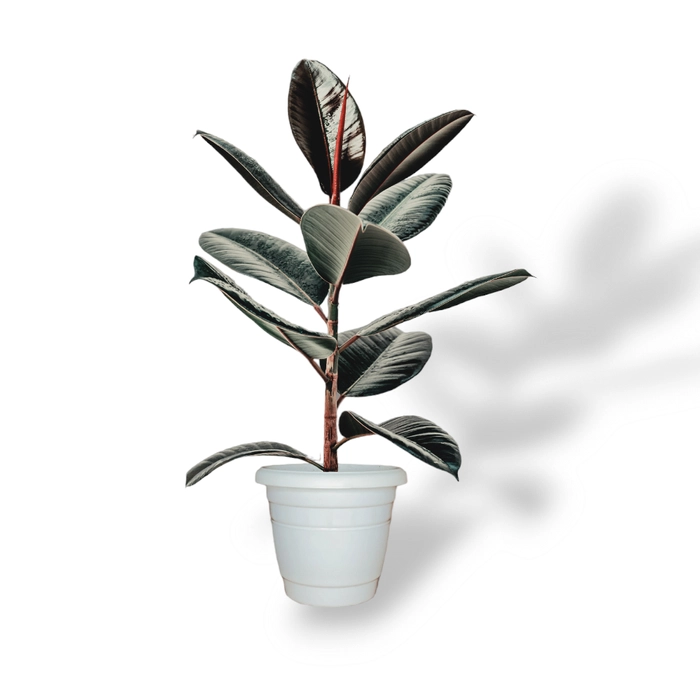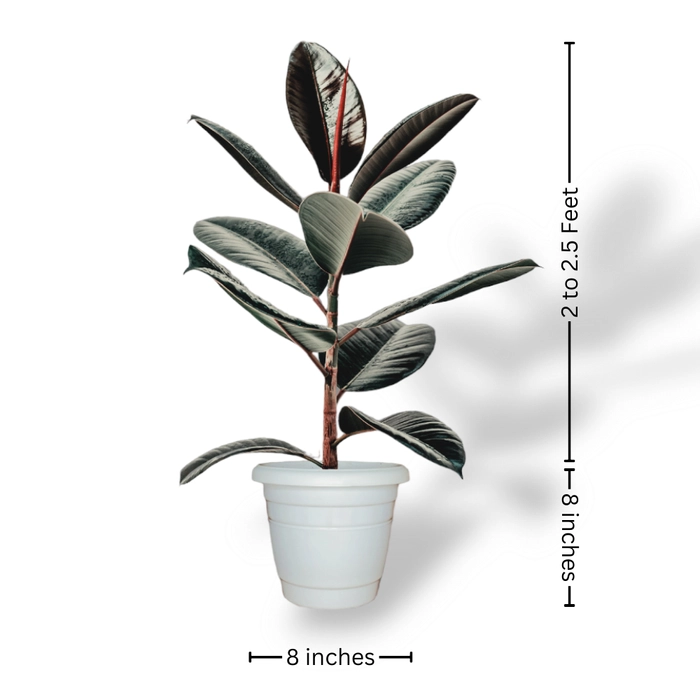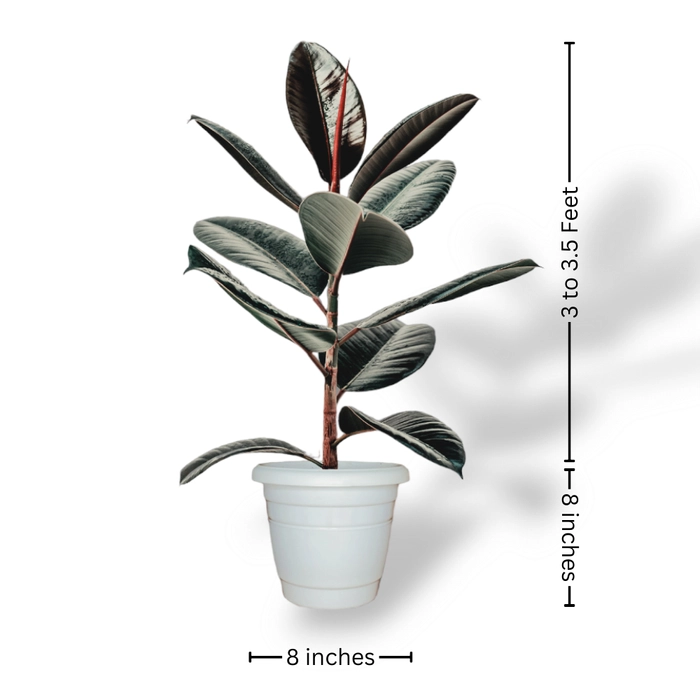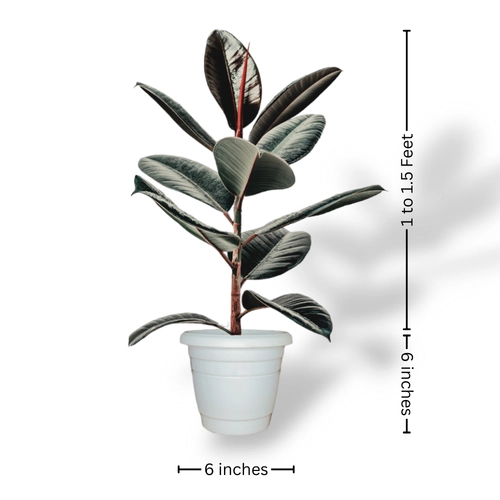Rubber Plant
Description
- The Rubber Plant, scientifically known as Ficus elastica, is a popular choice among indoor plant enthusiasts for its striking appearance and easy care.
Features
- Purifies indoor air by removing toxins such as formaldehyde and airborne microbes.
- Enhances indoor aesthetics with its striking foliage, suitable for various interior styles.
- Can be propagated easily from stem cuttings or air layering, making it a sustainable choice for plant enthusiasts.
- Features large, glossy, dark green leaves with a leathery texture.
- Leaves are typically oval or oblong-shaped with a pointed tip.
- Can grow into a tall tree or kept compact as a houseplant depending on pruning.
- Thrives in warm and humid environments but can adapt to average indoor conditions.
Care Guide
- Light: Rubber Plants thrive in bright, indirect light. Place them near a window where they can receive filtered sunlight. Avoid direct sunlight, as it can scorch the leaves.
- Watering: Allow the top inch of soil to dry out between waterings. Water thoroughly, ensuring excess water drains away.
- Soil: Plant Rubber Plants in well-draining soil mix, such as a blend of potting soil, perlite, and peat moss. Ensure the pot has drainage holes to prevent waterlogging, which can lead to root rot.
- Humidity: Rubber Plants prefer moderate to high humidity levels. Mist the leaves occasionally or place the plant on a tray filled with pebbles and water to increase humidity around the plant.
- Fertilization: Feed Rubber Plants with a balanced liquid fertilizer diluted to half strength every 2-4 weeks during the growing season (spring and summer). Reduce fertilization frequency or stop altogether during the winter months when growth slows down.
- Pruning: Prune Rubber Plants to remove dead or yellowing leaves and encourage bushier growth. Use clean, sharp pruning shears to make clean cuts, and avoid cutting into healthy tissue.











